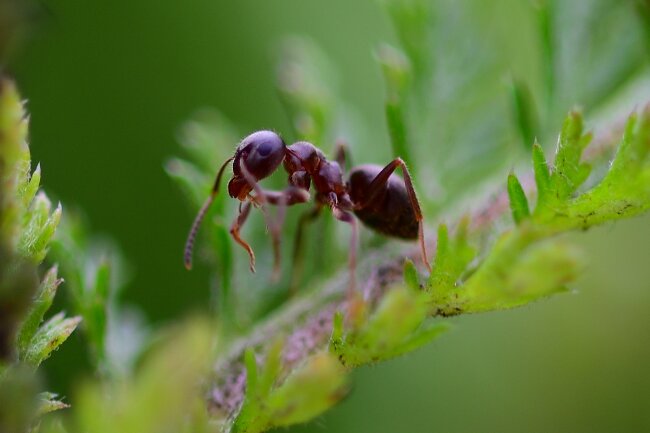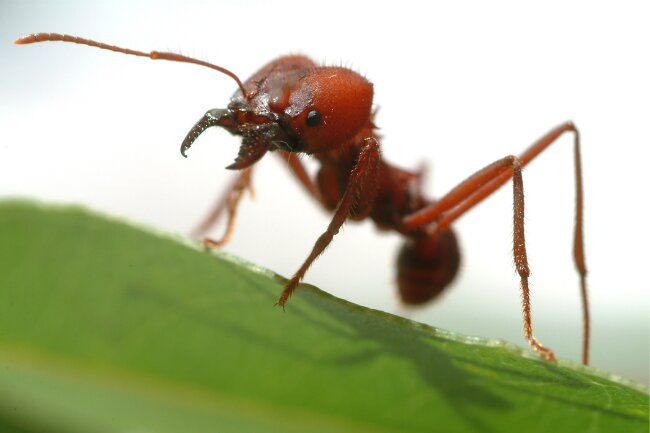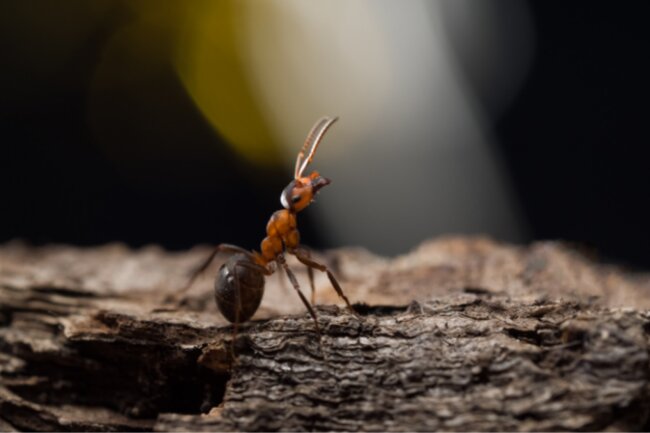Ants breathe using small holes located across their bodies called spiracles. These connect to branching structures in their bodies that deliver the oxygen directly to muscles where it is needed.
Contents
Deep breath

Ants are some of the most successful insects in the world, found across almost all continents, aside from Antarctica. From deserts to rainforests, the world’s 12,000 different species have adapted to a wide range of environments.
Like us, ants have a number of requirements to be able to survive, such as food, temperatures that aren’t too hot or too cold, and of course, one of the most basic and essential; access to oxygen. Oxygen is vital for almost all living beings, helping to power our bodies.
| Component | Description |
|---|---|
| Spiracles | Small openings on the ant’s body through which it breathes |
| Tracheae | Tiny tubes that connect the spiracles to the internal tissues of the ant |
| Air Sacs | Structures within the ant’s body that store and distribute oxygen |
| Spiracular Glands | Glands associated with the spiracles that help regulate gas exchange |
Yet, there are many ways in which ants differ from us in how they breathe. Firstly, ants do not have lungs. In many mammals, reptiles and amphibians we can find lungs that are very similar to our own. Yet, when it comes to insects, their diminutive size means that lungs would not function effectively.
Instead of one entrance for oxygen into their bodies, ants have many small holes known as spiracles. These spiracles are located along the ant’s body, in nine or ten pairs, depending on the species. Spiracles allow oxygen to enter the body through diffusion, rather than requiring active breathing, therefore meaning there is no need for an actual pair of lungs. Diffusion means that air pressure pushes the air into the openings.
However, this system wouldn’t work for larger animals, such as ourselves, as the air pressure wouldn’t be enough to force air into all areas of our bodies requiring it.
Once oxygen has entered the spiracles, it enters a series of tubes known as tracheae. These tubes get smaller and smaller, in a branching structure, until they connect to the necessary muscles that require the oxygen to function.

Another difference with insects is that their blood, known as hemolymph, is not designed to carry oxygen. Within mammals, like us, our blood contains red blood cells, which carry oxygen around our bodies and deliver it to our organs and muscles.
Within insects, their hemolymph isn’t able to carry oxygen. Instead, this type of blood carries other important substances around the body, such as minerals and sugars. In insects, their blood is pumped around the body by a heart, which is part of a large open-ended tube that runs through the body.
| Stage | Description |
|---|---|
| Inhaling | The ant contracts its body, drawing air into the spiracles |
| Oxygen Exchange | Oxygen diffuses through the tracheae and is transported to body tissues |
| Carbon Dioxide Release | Carbon dioxide produced by cellular respiration is released through spiracles |
| Exhaling | The ant relaxes its body, allowing the air to be expelled |
The hemolymph passes through the heart and then enters the body cavity, where it is not contained within veins and arteries like blood would be in a human body. Instead, the hemolymph is moved slowly through the body by the pressure created by more hemolymph being pumped in by the heart.
This open circulatory system means the blood does not move fast enough to be able to deliver oxygen to where it is needed within the body, another reason why the more direct approach developed by insects is a big success.
Also read: If You Wonder “Do Ants Have Bones?” (Exoskeletons Explained)
How do ants breathe underground?

Ants breathe underground just as they would above ground. They have the added advantage that because the spiracles are placed along their body, they can use their mandibles to dig without having to worry about breathing.
However, there are challenges in breathing underground. Air movement within the nest is important to allow enough oxygen in, and to remove any harmful gases that may be building up. These could be produced by the ant’s food, the ants themselves, or even be released by things within the soil.
In order to keep the nest well-ventilated, ants carefully design their tunnels to allow the right amount of airflow, orientating them to the right directions to let air in an out. This is a dynamic process, and ants will open and close tunnels at different times depending on the conditions.
Constantly adjusting the tunnels also allows them to regulate temperature, meaning they may close more tunnels in the winter to trap warmth.
Also read: 10 Different Methods That Explain How Ants Survive the Winter
Giants of the past
If you look back at the fossil record, you may be amazed at the size of some of the insects that used to roam the Earth. This is largely thanks to higher levels of oxygen that were available in the past.
Availability of oxygen is a limiting factor to how big an animal can grow. This is particularly true in insects due to the method they receive their oxygen. Because it is a passive process, they can only receive so much air into their bodies at once.
Therefore, when the levels of oxygen in the atmosphere were higher, they were able to receive large amounts of oxygen while still only receiving the same amount of air. This meant they were able to grow significantly larger than they could today.
While the idea of these giant creepy-crawlies may be fascinating, it’s unlikely anyone would be pleased to see a foot-long ant turning up to their next picnic!

